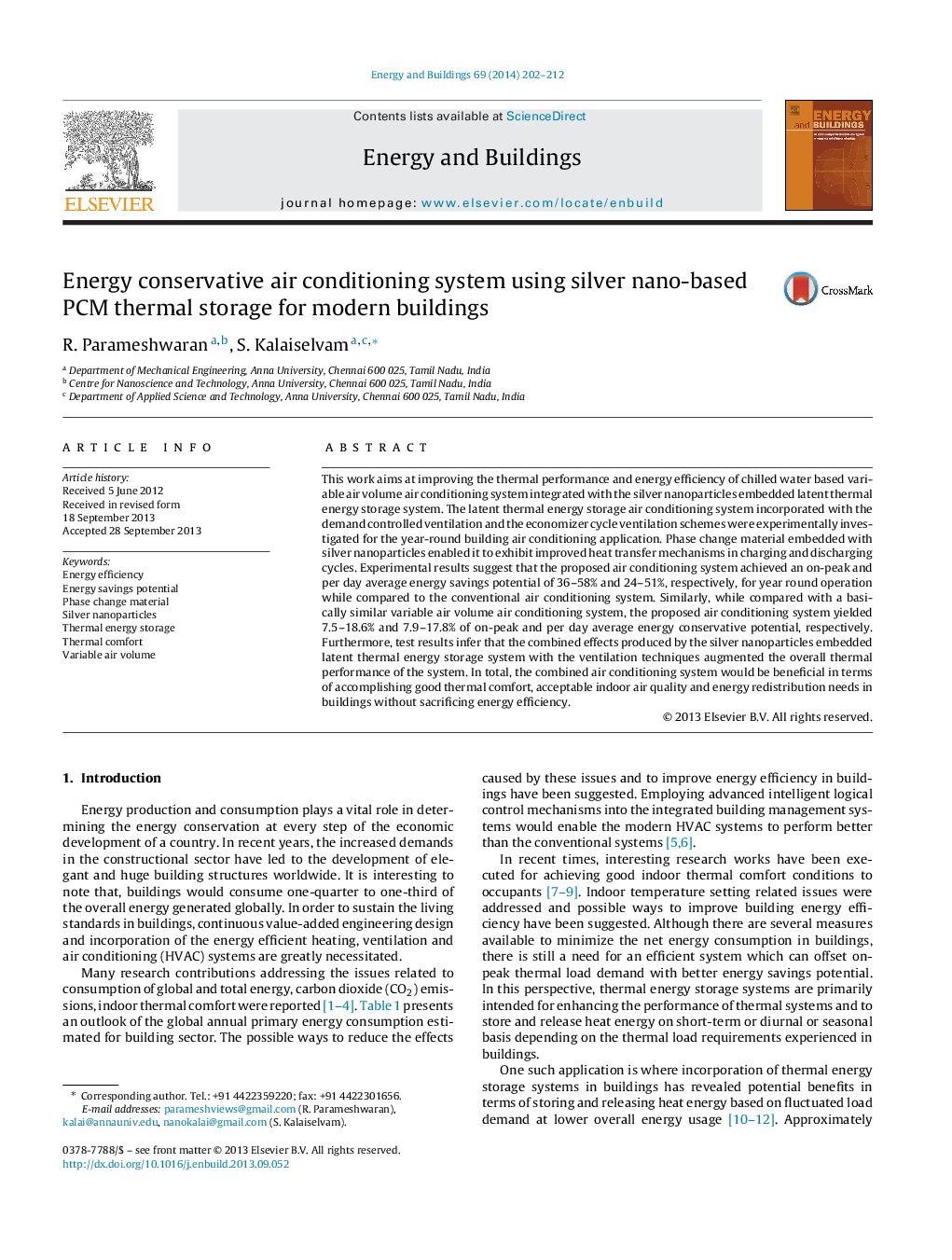| Article ID | Journal | Published Year | Pages | File Type |
|---|---|---|---|---|
| 263144 | Energy and Buildings | 2014 | 11 Pages |
•Energy redistribution in test building is acquired by the VAV-NTES A/C system.•Heat transfer rate in charging and discharging cycles of PCM are improved by AgNP.•Combined power consumption reduces from 3.48 kW to 1.38 kW in year round operation.•Use of ventilation schemes ensures thermal comfort and IAQ in indoor environment.•Appreciable energy savings in the range of 7.5–58% is achieved by this system.
This work aims at improving the thermal performance and energy efficiency of chilled water based variable air volume air conditioning system integrated with the silver nanoparticles embedded latent thermal energy storage system. The latent thermal energy storage air conditioning system incorporated with the demand controlled ventilation and the economizer cycle ventilation schemes were experimentally investigated for the year-round building air conditioning application. Phase change material embedded with silver nanoparticles enabled it to exhibit improved heat transfer mechanisms in charging and discharging cycles. Experimental results suggest that the proposed air conditioning system achieved an on-peak and per day average energy savings potential of 36–58% and 24–51%, respectively, for year round operation while compared to the conventional air conditioning system. Similarly, while compared with a basically similar variable air volume air conditioning system, the proposed air conditioning system yielded 7.5–18.6% and 7.9–17.8% of on-peak and per day average energy conservative potential, respectively. Furthermore, test results infer that the combined effects produced by the silver nanoparticles embedded latent thermal energy storage system with the ventilation techniques augmented the overall thermal performance of the system. In total, the combined air conditioning system would be beneficial in terms of accomplishing good thermal comfort, acceptable indoor air quality and energy redistribution needs in buildings without sacrificing energy efficiency.
